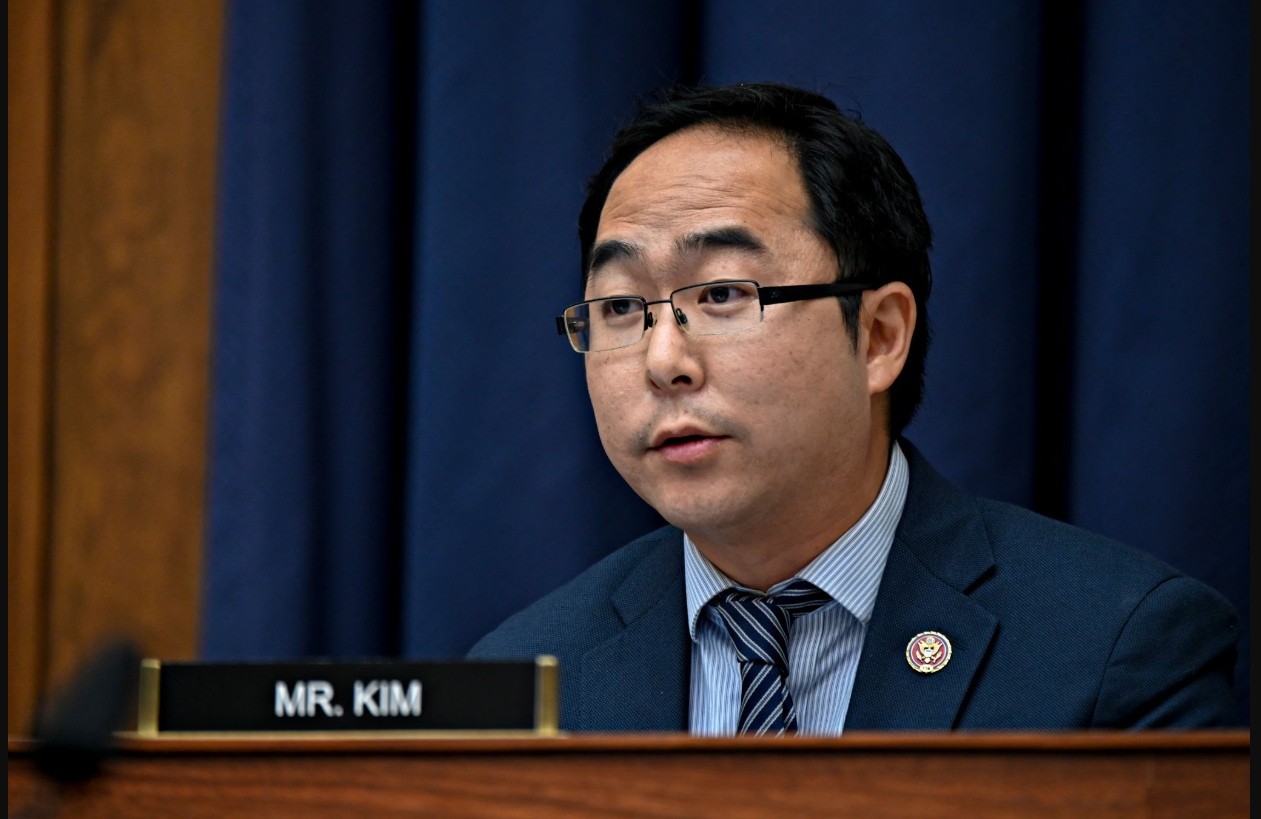Who is Eric Lander - New Science Adviser: Biography, Personal Life, Political Career
 |
| Photo: Nature |
Eric Lander - Life & Early career
Lander was born on February 3, 1957, in Brooklyn, New York. He graduated from Stuyvesant High School, one of New York City’s public science high schools, where he was captain of the math team. In 1974, he won the Westinghouse Science Talent Search for work on number theory and was a member of the first U.S. team to compete in the International Mathematical Olympiad, in East Germany, where he received an individual silver medal and the U.S. team placed second.
In 1978 he earned a B.A. in mathematics from Princeton University, where he was a reporter for the student newspaper and served on the university’s budget-setting committee. He credits John McPhee’s legendary course, The Literature of Fact, for a life-long passion in non-fiction writing. He was valedictorian of his class and received the Pyne Prize, the highest distinction conferred by the university upon an undergraduate.
As a Rhodes Scholar from 1978 to 1981, he attended Oxford University, where he earned a D. Phil. in mathematics. His thesis, on algebraic combinatorics and coding theory, under the supervision of Peter Cameron, focused on applications of group representation theory to information theory and became a book, Symmetric Designs: An Algebraic Approach, published by Cambridge University Press (1983).
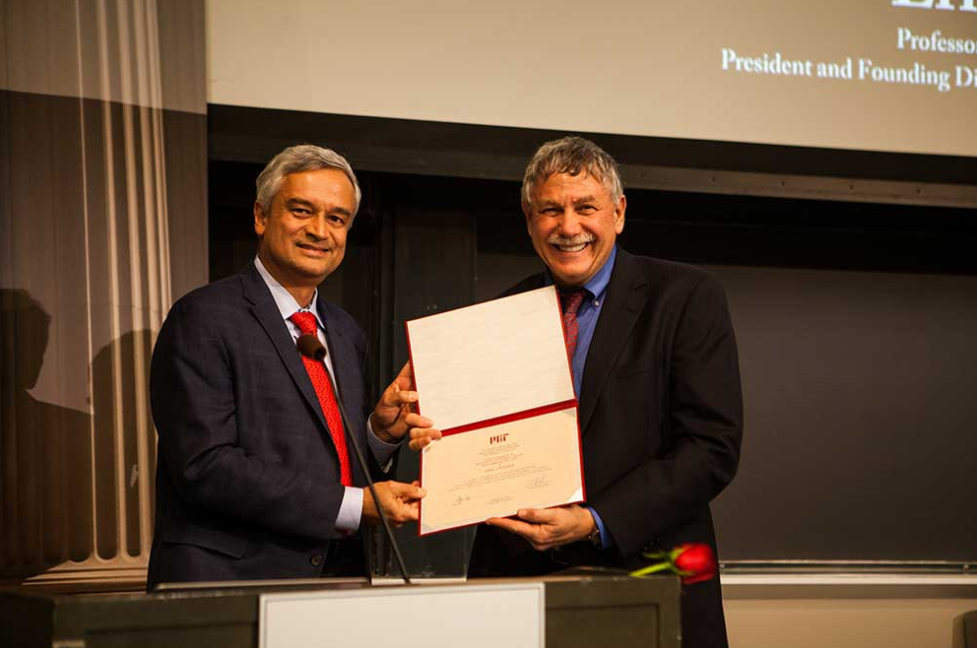 |
| Photo: MIT |
Eric Lander's Scientific contribution
Lander’s scientific work—carried out in collaborations with many colleagues, including trainees, professional scientists, and colleagues at the Broad and around the world—has focused on understanding the human genome and its uses in medicine. In support of this work, he played a pioneering role in all aspects of the mapping, sequencing, and characterization of the human genome.
In 1986, he was appointed a Whitehead Fellow of the Whitehead Institute for Biomedical Research, where he started his own laboratory. Lander was subsequently appointed as a tenured professor in MIT’s Department of Biology (1990-present) and a member of the Whitehead Institute for Biomedical Research (1990-2008). Lander was a key leader of the Human Genome Project — the race to sequence the human genome, which ended in 2003 — and is president and founding director of the Broad Institute of MIT and Harvard in Cambridge, Massachusetts. He will be the first biologist to run OSTP.
Later, he was also appointed professor of systems biology at Harvard Medical School (2004-present). In 2004, he became the president and founding director of the Broad Institute of MIT and Harvard and a core member of the institute’s faculty. Between 2009 and 2017, he also co-chaired the President’s Council of Advisors on Science and Technology (PCAST), an elite panel that advises the US president. Among the PCAST reports issued during Lander’s tenure were some dealing with pandemics, vaccination, energy, and climate change, according to Nature.
Lander made important contributions to cancer genomics, including developing general methods to discover cancer subtypes based on gene expression and identifying new cancer genes based on genome sequencing. He chaired a committee for the National Cancer Institute that in 2005 proposed The Cancer Genome Atlas, a project to create a comprehensive map of cancer genomes. Lander was a pioneer in ensuring that large-scale genomic information and tools are made freely and immediately available—beginning with his lab’s mouse genetic maps in the early 1990s and continuing with the Human Genome Project’s commitment to free data sharing.
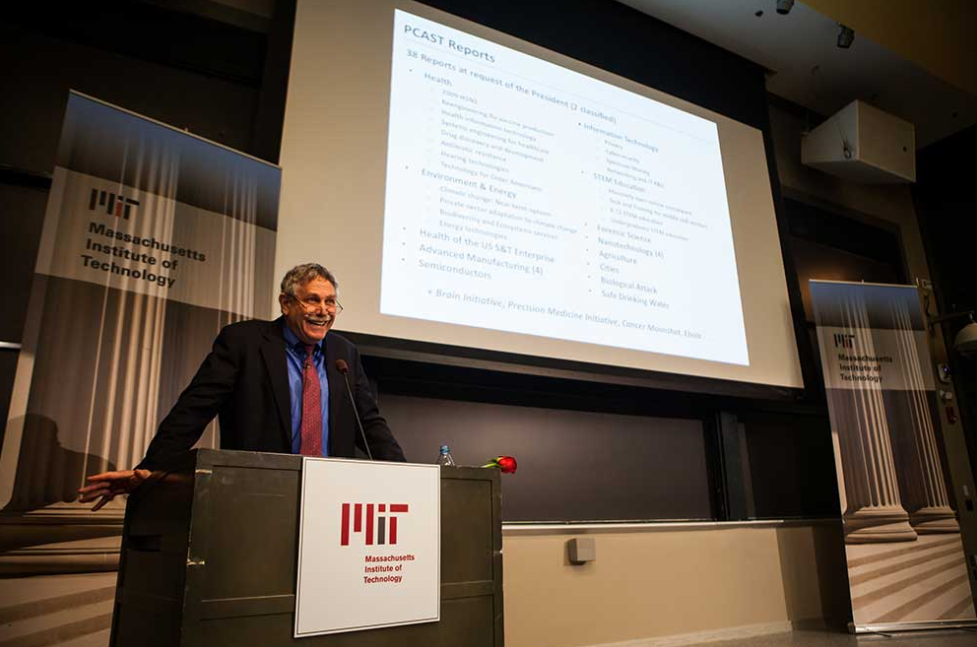 |
| Photo: MIT |
Lander's work to lay key foundations of modern human genetics
In 1985, Lander and Botstein began to work together to lay key foundations of modern human genetics. In a seminal paper in 1980, Botstein had described how one might create a genetic map of the human genome based on DNA polymorphisms and use it to systematically map genes for rare Mendelian diseases by tracing the inheritance of polymorphisms in affected families. The pair collaborated to create the first human genetic map: Botstein launched an experimental group to discover and genotype polymorphisms; Lander discovered and applied algorithms that made the analysis feasible. This work resulted in the first genetic linkage map of the human genome, published in 1987. In parallel, Lander and Botstein discovered principles to extend human genetics from family-based mapping of rare monogenic disorders to population-based mapping of any disease or trait, including common polygenic diseases—by using much denser genetic maps to recognize shared ancestral segments in affected individuals.
Over the next 30 years, these genetic principles have led to the identification of more than 6,000 genes responsible for rare Mendelian diseases and more than 100,000 genetic loci contributing to scores of common human diseases and traits—including inflammatory diseases, heart disease, psychiatric disorders, diabetes, and many more. It also led to the identification of hundreds of genomic regions that have been under strong positive selection in recent human history, pointing to genetic variants that confer advantages, such as protection against infectious diseases.
To put these principles into practice, Lander devoted himself to creating dense maps of the human genome—including genetic maps, physical maps, and the sequence map of human DNA. As a scientific home for these and other genomic studies, he founded the Whitehead/MIT Center for Genome Research. Complementing his work on the creation of the first human genetic map in 1987, Lander’s group produced the first physical map of the human genome in 1995. He and his colleagues then became the leading contributors to the sequencing of the human genome (contributing one-third of the total), the analysis of the genome sequence, and the writing of the landmark paper reporting a draft sequence in 2001, and continued the work through the completion of a finished genome sequence in 2004. Using the finished sequence as a scaffold for sequence assembly, biologists have subsequently sequenced more than one million human genomes to date.
 |
| Photo: MIT |
Political Career of Eric Lander
Lander has played an active role in public policy and public service. In 2008, Lander was appointed by President Obama as co-chair of the President’s Council of Advisors on Science and Technology (PCAST), serving for the entire term (2009 to 2017). PCAST is a council of the nation’s leading scientists and engineers, charged with advising the president and the White House on matters of national importance related to science, technology, and innovation, said Broad Institute.
Lander has also been involved in other issues at the interface of law and science. He played a role in the landmark U.S. Supreme Court case (Association for Molecular Pathology v. Myriad Genetics, Inc. (2013)) about whether human genes are patentable. He wrote an important amicus brief that helped shape the court’s oral argument and the eventual decision that a human’s own genomic DNA is a product of nature that is not patentable, but laboratory-created cDNA is patentable. In 2017 and 2019, he wrote an amicus brief in two cases on partisan gerrymandering (Gill v. Whitford and Rucho v. Common Cause), describing how modern computational analysis enabled a judicially manageable standard for recognizing when a redistricting map was an extreme outlier.
From 2016 to 2020, he served as a member of the Defense Innovation Board, which advises the Secretary of Defense on matters related to technological and organizational innovation, including the role of computer science and artificial intelligence in national defense.
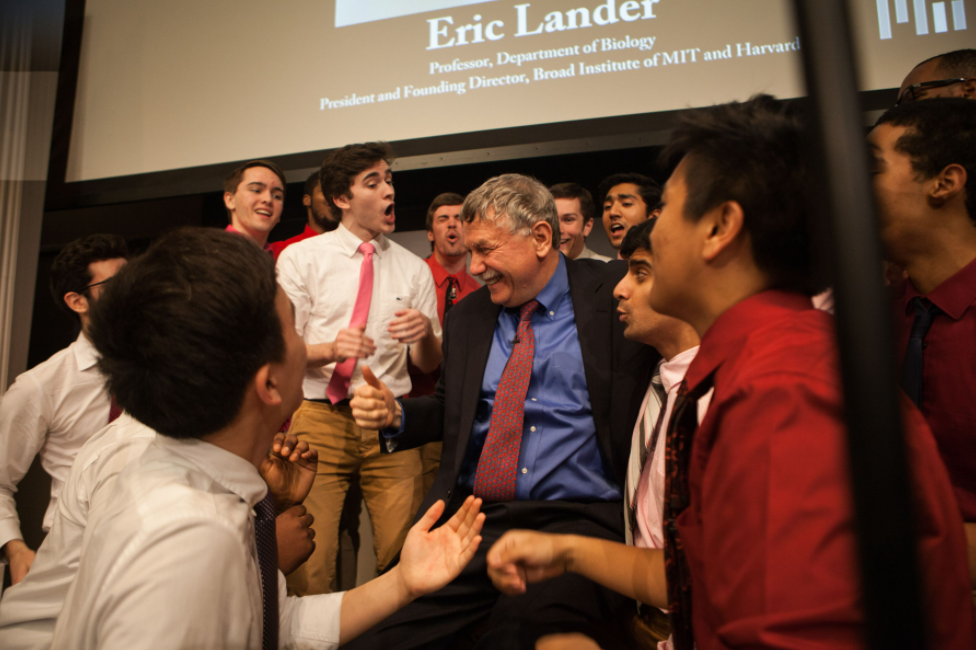 |
| Photo: MIT |
Awards, Honors, and Recognitions
Lander’s honors and awards include the MacArthur Fellowship, the Breakthrough Prize in Life Sciences, the Albany Prize in Medicine and Biological Research, the Gairdner Foundation International Award of Canada, the Dan David Prize of Israel, the Mendel Medal of the Genetics Society in the U.K., the City of Medicine Award, the Abelson Prize from the AAAS, the Award for Public Understanding of Science and Technology from the AAAS, the Woodrow Wilson Prize for Public Service from Princeton University, the James R. Killian Jr. Faculty Achievement Award from MIT, and the William Allan Award from the American Society of Human Genetics.
He was elected as a member of the U.S. National Academy of Sciences in 1997 and of the U.S. Institute of Medicine in 1999. He is also an elected member of seven other scientific academies, including the Swedish Royal Academy of Science, the European Molecular Biology Organization, and the Academy of Athens. He was also appointed by Pope Francis to the Pontifical Academy of Sciences. He has received honorary degrees from 13 colleges and universities.
Lander is one of the most highly cited scientists, according to Google Scholar. Lander was named by Time magazine as one of the 100 most influential people in the world in 2004; by U.S. News and World Report as one of America’s Top 20 Leaders in 2006; and #2 on the MIT150 list of the most significant innovators in MIT’s 150-year history in 2011.
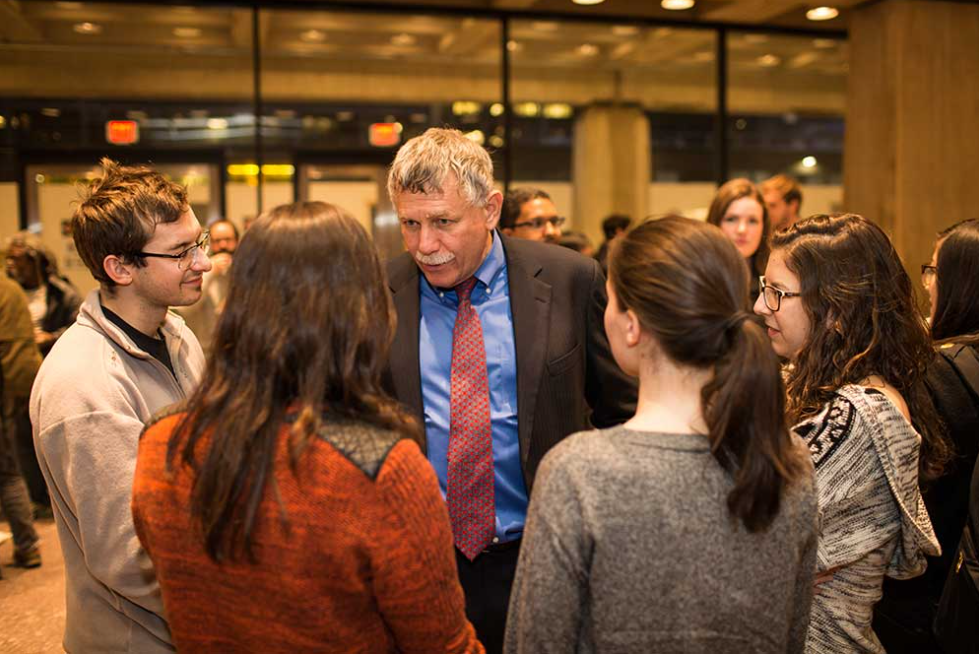 |
| Photo: MIT |
What will Lander be responsible for as OSTP?
One major question is what parts of science policy Lander and his office will be responsible for. Biden has already established a separate, high-level team to lead the national response to the COVID-19 pandemic, as well as a team to drive forward his climate agenda. With COVID-19 and climate tasked to other groups, it remains to be seen what science issues OSTP will be able to take the lead on, says Pielke. “OSTP always has a challenge in figuring out what policy lanes it plays in,” he says.
Biden has given at least a hint of what he’d like Lander to work on, however. In a letter to Lander, Biden outlined five key questions he wanted OSTP to tackle, including how to draw lessons from the pandemic to inform public health more broadly and how science and technology breakthroughs could help address climate change. Biden also said he wants Lander to go about his role by “working broadly and transparently with the diverse scientific leadership of American society and engaging the broader American public”.
Biden to get scientists to cabinet - Decisive break from Trump's policyWhen Biden named Lander to his team on 15 January, he also announced a number of other respected scientists to key positions in his administration. Many scientists have long called for the OSTP director to be raised to a cabinet-level position. Speaking in Wilmington, Delaware, on Saturday, Biden said Lander was “one of the most brilliant persons I know” and is someone who has “changed the course of human history” through his work to map the human genome. The president-elect said he hoped his science team would lead the way in everything from renewable energy to cancer research, something he said was “deeply personal” to him given the loss of his son Beau. Trump has caused despair among scientists, repeatedly dismissing basic understanding of the climate crisis, falsely claiming the Covid-19 pandemic would “just disappear” and sidelining or rejecting politically inconvenient evidence in governmental decision-making. Biden is scheduled to be inaugurated as president on 20 January. Lander’s appointment is only the fourth time since the OSTP was created, in 1976, that a leader has been tapped for it prior to Inauguration Day, says Pielke. The outgoing OSTP director, meteorologist Kelvin Droegemeier, wasn’t appointed by President Donald Trump until more than a year and a half into his administration, said Nature. *Check out Full List of Biden's Cabinet HERE! |
 Who is Jennifer Granholm - Secretary of Energy Nominee: Profile, Career and Life? Who is Jennifer Granholm - Secretary of Energy Nominee: Profile, Career and Life? Jennifer Mulhern Granholm is a Canadian-born American politician, lawyer, educator, author, and political commentator. She was announced to serve as Secretary of Energy by President-elect ... |
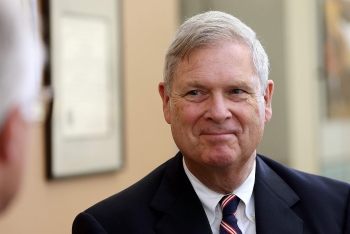 Who is Tom Vilsack - Secretary of Agriculture nominee: Biography, Political Career and Life? Who is Tom Vilsack - Secretary of Agriculture nominee: Biography, Political Career and Life? Appointed by President Barack Obama, Tom Vilsack was the 30th Secretary of the US Department of Agriculture from 2009 to 2017. Vilsack is once again ... |
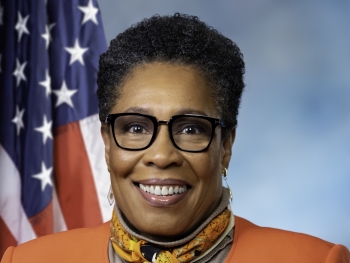 Who is Marcia Fudge - Secretary of Housing and Urban Development nominee: Profile, Career and Life Who is Marcia Fudge - Secretary of Housing and Urban Development nominee: Profile, Career and Life Marcia Louise Fudge, who presents the people of Ohio's 11th congressional district was nominated Fudge as Secretary of Housing and Urban Development in the incoming ... |

